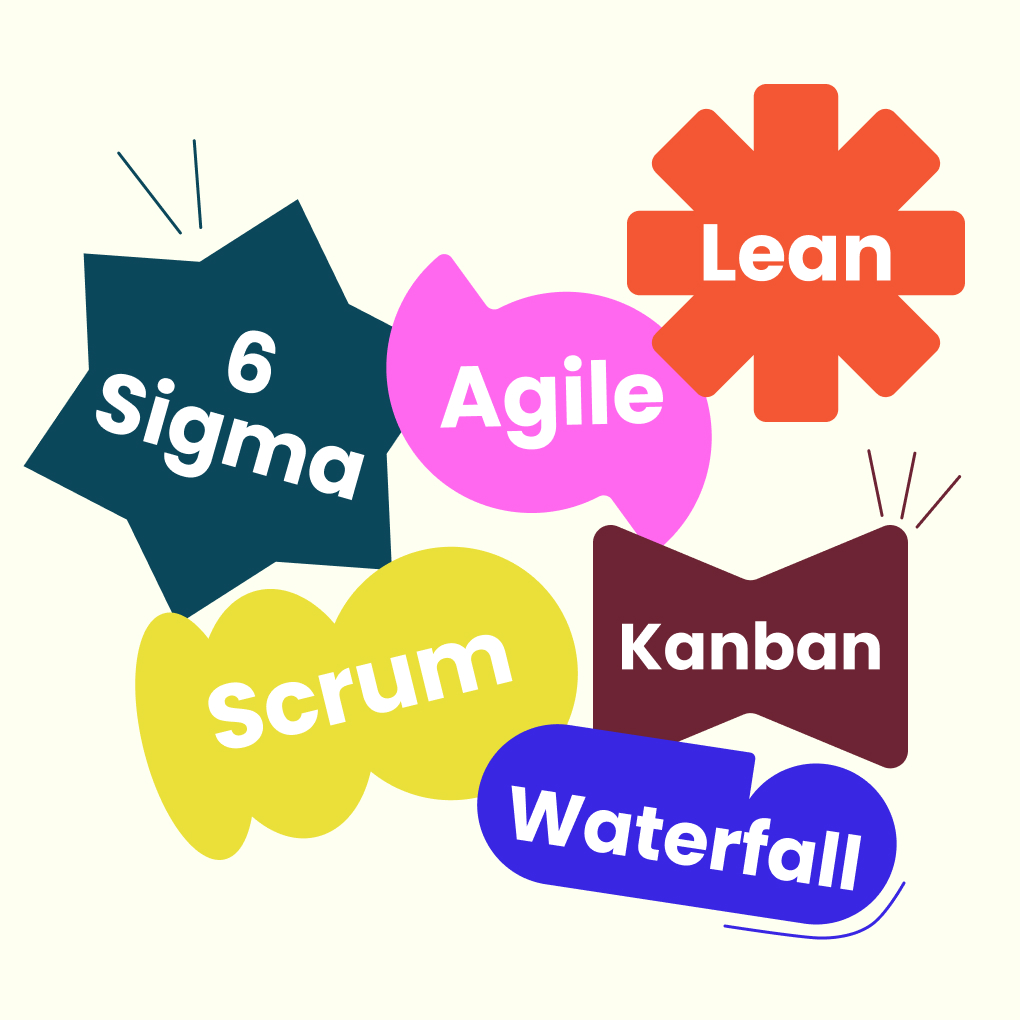The rise of remote work has fundamentally changed how teams operate. Geographic barriers have dissolved, but new challenges in communication, coordination, and maintaining productivity have emerged. In fact, reports show that, by the end of 2025, less than 55% of the workforce will be bound to traditional offices – proving that remote work is here to stay. Fortunately, a wealth of free collaboration tools has sprung up to bridge these gaps. Choosing the right remote collaboration tools can mean the difference between a disjointed, inefficient remote team and a connected, high-performing one.
This guide explores the best collaboration tools for remote teams available for free in 2025. We’ll delve into why these tools are crucial, what features to look for in free team collaboration tools, and review the top 13 options, highlighting why Morningmate stands out as the premier all-in-one solution. Whether you need collaboration software free for project management, communication, or creative work, you’ll find valuable insights here.
Why Collaboration Tools Matter for Remote Teams
Working remotely offers flexibility but can lead to silos and miscommunication if not managed well. The lack of spontaneous interactions in traditional offices makes collaborative tools essential for effective remote work. Without the right technology, teams face challenges like lost information in lengthy emails, missed context in messages, and delayed responses, which can hinder brainstorming and clarity on project priorities. This can result in decreased productivity as team members waste time searching for information or switching between apps.
Additionally, reduced interaction can weaken team cohesion and make onboarding new members difficult. Remote collaboration software addresses these issues by providing centralized platforms for communication, task management, and file sharing. These tools create a virtual workspace where team members can connect, share information, and track progress effectively, making it crucial to invest in the right collaboration tools for your remote team’s productivity and unity.
What to Look for in Free Remote Collaboration Tools
While “free” tools are appealing for startups and small businesses, it’s important to carefully evaluate free collaboration apps due to their common limitations. Not all freeware collaboration software is equal, and the hidden costs can arise from inefficiencies.
Here are key factors to consider when assessing free collaboration tools for remote teams:
- User Limits: Free plans often restrict the number of users. Ensure the limit fits your current team size and allows for growth.
- Feature Restrictions: Free tiers may lack advanced features like automation, reporting, or specific project views. Check if the core features meet your team’s needs.
- Storage Caps: Free plans usually have limited storage for file attachments, which can hinder media-rich projects. Assess your team’s file-sharing habits.
- Integration Capabilities: Limited integrations with other tools can disrupt workflow. Verify if essential integrations (e.g., Google Drive, Slack) are available.
- History & Data Access: Some tools restrict access to message history or data export options, which can complicate referencing past decisions.
- Support Levels: Free users often receive minimal support compared to paid plans.
- Branding & Customization: Free versions may include provider branding and limit customization options.
- Security & Compliance: Advanced security features are typically reserved for paid tiers.
- Scalability: Consider how easily you can upgrade to a paid plan as your team grows.
Choosing the right web collaboration tools free requires balancing these limitations with your team’s needs. Focus on the most critical features for your workflow and find a free tool that aligns with those needs, as an all-in-one platform may offer more value than multiple restricted tools.
Best Free Collaboration Tools for Remote Teams
Navigating the landscape of free collaboration tools can be overwhelming. To help, we’ve compiled a list of the top 13 options available as of May 1, 2025, evaluating their strengths, weaknesses, and crucial free plan limitations for remote teams.
1. Morningmate (Best All-in-One Collaboration Tool for Remote Teams)
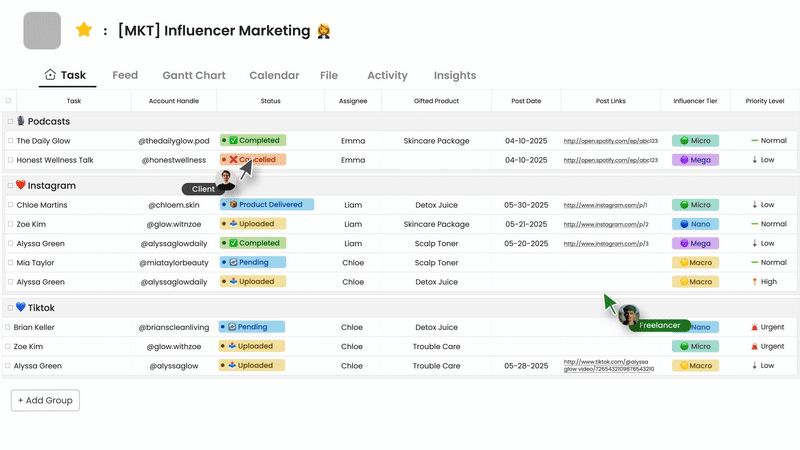
Morningmate is a simple and easy AI digital workspace. It’s specifically designed to enhance remote collaboration by combining project management and business communication seamlessly, aiming to consolidate functionality often spread across tools like Slack, Jira, Asana, and Teams into one intuitive platform. This makes its generous free offering particularly compelling.
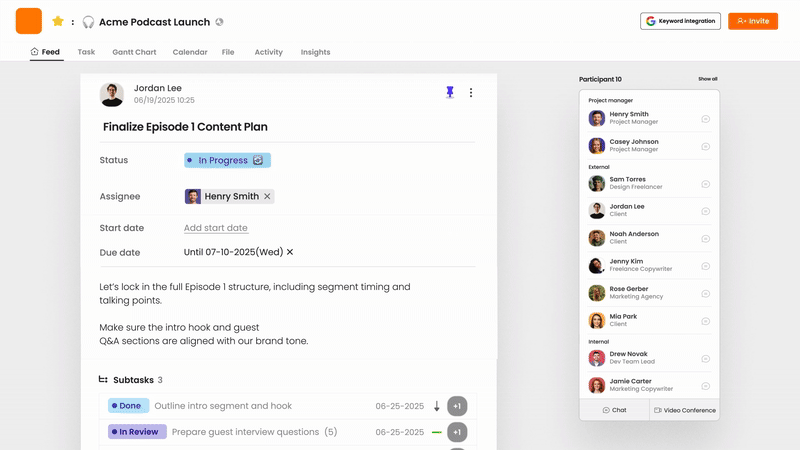
What makes Morningmate unique for remote teams is its unified workspace. It combines project and task management, using familiar tools like boards and lists, with a special feed-style communication system for posts, articles, polls, and to-dos, along with a built-in chat for the organization. This setup minimizes the need to switch between different tools and keeps conversations directly linked to work items. The project-focused communication feed ensures that all important discussions, files, and tasks are organized within the project context. It also allows for external collaboration, enabling invitations for clients or partners, and features an intuitive user interface for easy use.
The Morningmate Free Plan allows management of up to 5 projects, making it suitable for individuals or small teams. Each user receives 500 MB of storage, a reasonable starting point for documents, though potentially limiting for media files. The plan includes the core Messenger and feed-style posts for communication. Crucially for remote work, it supports essential integrations cloud storage (Google Drive, Dropbox, OneDrive). The primary limitations are the project count and storage space per user. Accessing advanced AI, unlimited projects/storage, enhanced security features (like watermarks or audit logs), and broader integrations (like Google Workspace) requires upgrading to a paid plan.
Verdict: Morningmate’s Free plan provides a remarkably integrated starting point. By combining core communication and project management functionalities often requiring separate free tools (like pairing Slack with Trello), it simplifies the remote tech stack. Its focus on unified workflow and essential integrations makes Morningmate the best all-in-one free collaboration tool for individuals and small remote teams seeking streamlined work without initial cost, despite the project and storage limits.
2. ClickUp
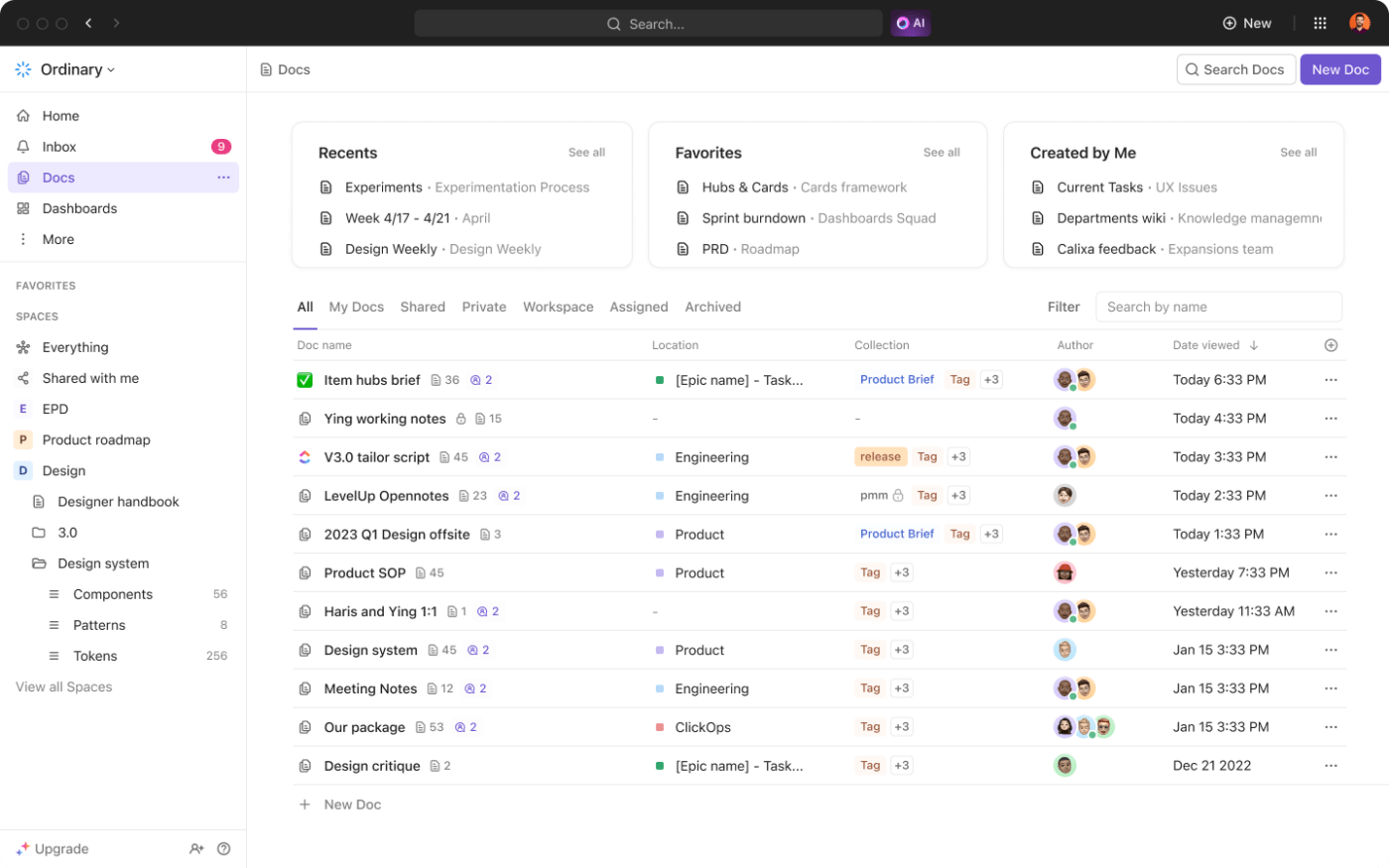
ClickUp is a highly versatile productivity platform known for extensive customization and a wide feature range, aiming to be the “one app to replace them all.” It includes tasks, docs, chat, goals, whiteboards, and more. Its feature breadth allows teams to manage complex workflows, and the free plan notably allows unlimited users and tasks.
However, the ClickUp Free Forever Plan (as of May 1, 2025) comes with significant restrictions. While users and tasks are unlimited, storage is capped at a meager 100 MB total for the workspace, a major constraint. The free plan includes basic task management (List, Board, Calendar views), collaborative Docs, limited Whiteboards (3), and limited Dashboard uses (100). It also offers basic integrations, real-time chat, and time tracking. Key limitations include restricted uses for custom fields (100 total), Goals, and Portfolios, plus very limited automation runs (100 actions/month) and only 5 organizational Spaces. It lacks Gantt charts, Timeline views, advanced permissions, most advanced features/integrations, and AI compatibility.
Verdict: ClickUp’s free offering is generous on user count but severely hampered by the tiny storage limit and feature restrictions. It’s best suited for individuals or teams with minimal file needs testing the core task management capabilities.
3. Slack
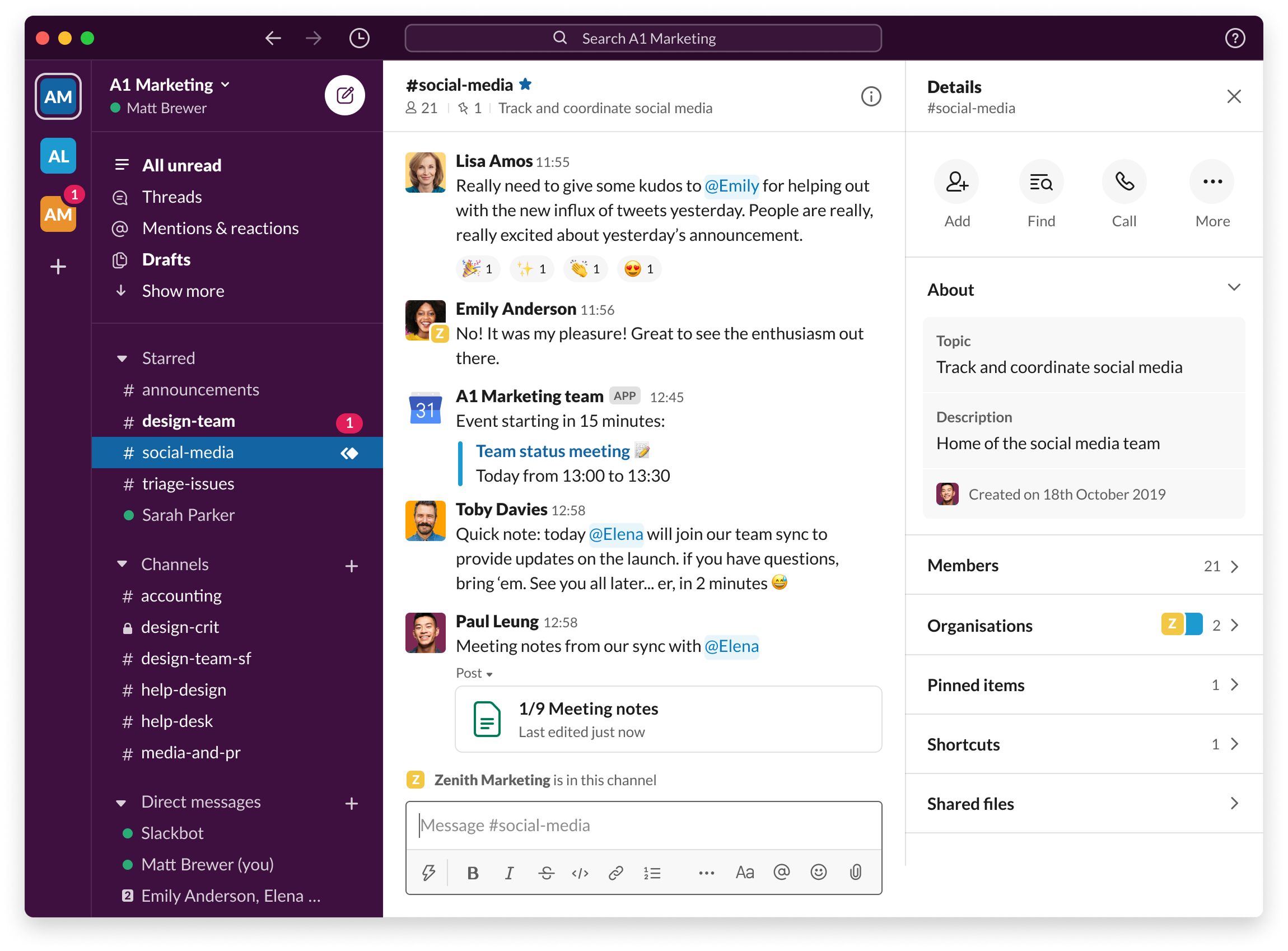
Slack is arguably the most recognized team communication platform, excelling at real-time chat through channels and direct messages, along with voice/video calls. Its polished interface and extensive integration ecosystem make it an industry standard.
The Slack Free Plan (as of May 1, 2025) allows unlimited users but has critical limitations for long-term use. Access to message history is restricted to the most recent 90 days, making it difficult to reference older information. Only 10 app integrations are permitted, and voice/video calls are limited to 1:1 interactions (no group calls or huddles). While storage is typically around 5GB total for the workspace, the core features focus on chat, channels, and basic file sharing. It lacks unlimited history, unlimited integrations, group calls, Slack Connect for external collaboration, and advanced security/compliance.
Verdict: Slack’s free plan is excellent for basic, immediate team communication. However, the 90-day message history limit and restrictions on integrations and group calls prevent it from serving as a comprehensive knowledge base or collaboration hub for many teams, often necessitating pairing with other tools.
4. Zoom

Zoom dominates the video conferencing market due to its reliability and ease of use for virtual meetings, webinars, and calls, making it essential for face-to-face remote communication.
The Zoom Basic Plan (Free) (as of May 1, 2025) allows hosting meetings with up to 100 participants and includes standard features like screen sharing, chat, virtual backgrounds, and local recording. The primary constraint is the 40-minute time limit on group meetings (3 or more participants), although 1:1 meetings can last up to 30 hours. This time limit often forces users into scheduling back-to-back sessions for longer discussions. The free plan also lacks cloud recording, advanced admin features, and integrations like transcription.
Verdict: Zoom’s free plan is invaluable for basic video calls. The 40-minute group meeting limit is its main drawback but it serves its specific communication purpose very effectively, though it isn’t a broad collaboration platform.
5. Trello
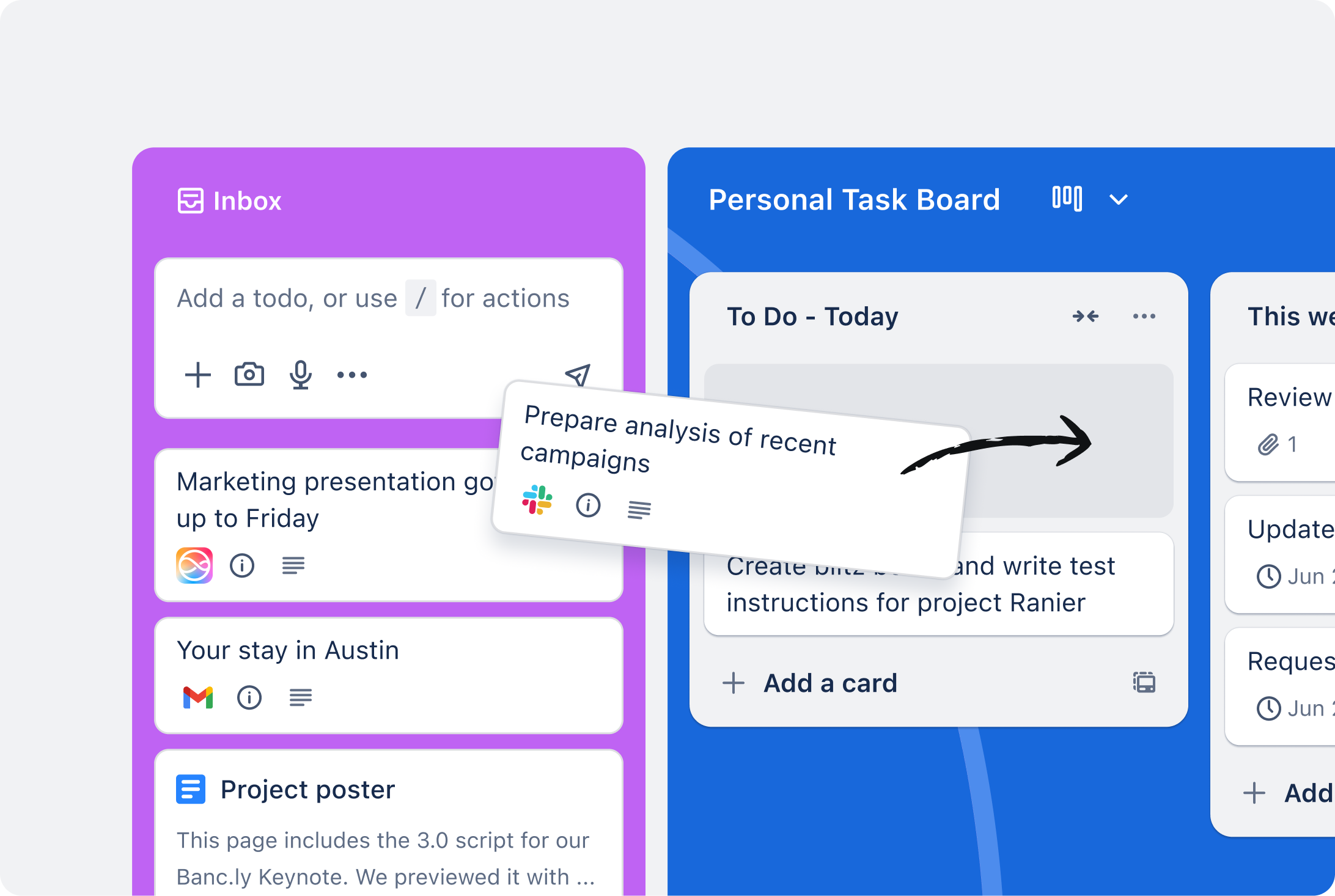
Trello is a popular Kanban-style project management tool famed for its simplicity and visual appeal, using boards, lists, and cards to organize workflows. Its ease of use makes it great for visualizing workflow stages.
The Trello Free Plan (as of May 1, 2025) supports up to 10 collaborators per Workspace and allows for 10 boards per Workspace. While storage is technically unlimited, there’s a 10MB per file limit. The plan includes unlimited cards and lists, an activity log, basic automation (250 command runs/month), unlimited Power-Ups (integrations/add-ons) per board, assignees, due dates, and custom backgrounds. However, it lacks advanced views like Timeline, Calendar, Dashboard, or Map, as well as advanced checklists, custom fields, and robust security/permissions.
Verdict: Trello’s free plan is excellent for individuals and small teams (up to 10) needing simple, visual task management. The 10-board limit, 10MB file cap, and lack of advanced views are the main constraints for larger projects or teams needing more sophisticated tracking.
6. Google Workspace (Individual Accounts)
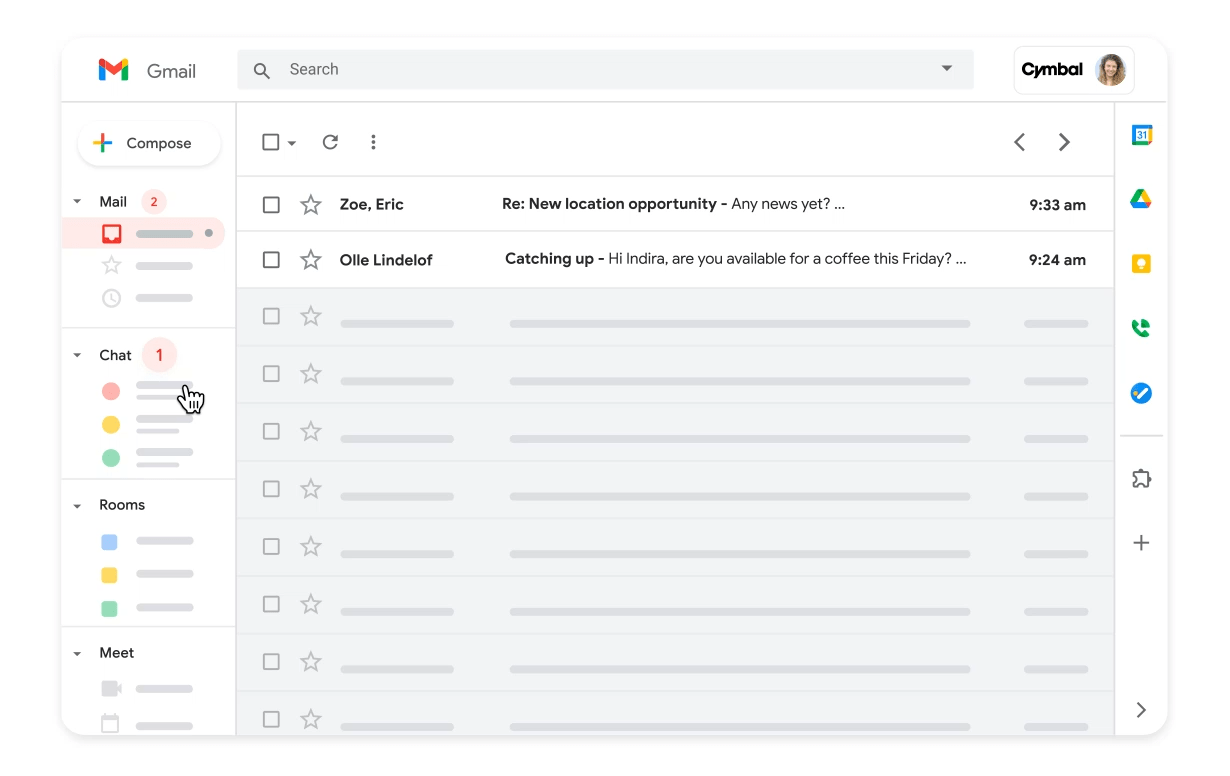
While Google Workspace offers paid business plans, free individual Google accounts provide a powerful suite: Gmail, Google Drive, Docs, Sheets, Slides, Meet, and Calendar. Its ubiquity, strong real-time document collaboration, and generous cloud storage make it a staple.
Using a Free Google Account (as of May 1, 2025) gives access to robust real-time co-editing in Docs, Sheets, and Slides, reliable Gmail, integrated Google Meet video calls (often with a 60-minute group limit), shared calendars, and 15 GB of free storage (shared across Drive, Gmail, Photos). The main limitations compared to paid Workspace plans are the lack of centralized admin controls, custom email domains, pooled storage, advanced security (like Vault), guaranteed uptime SLAs, and dedicated support. Collaboration relies on manual sharing permissions rather than structured team workspaces, and advanced AI (Gemini) features often require payment.
Verdict: Free Google accounts offer an exceptional suite for document collaboration and basic communication, backed by significant storage. However, they lack the structured project management, administration, and advanced business features of dedicated platforms. Excellent for document work, less ideal for comprehensive project and team management.
7. Microsoft Teams (Free)
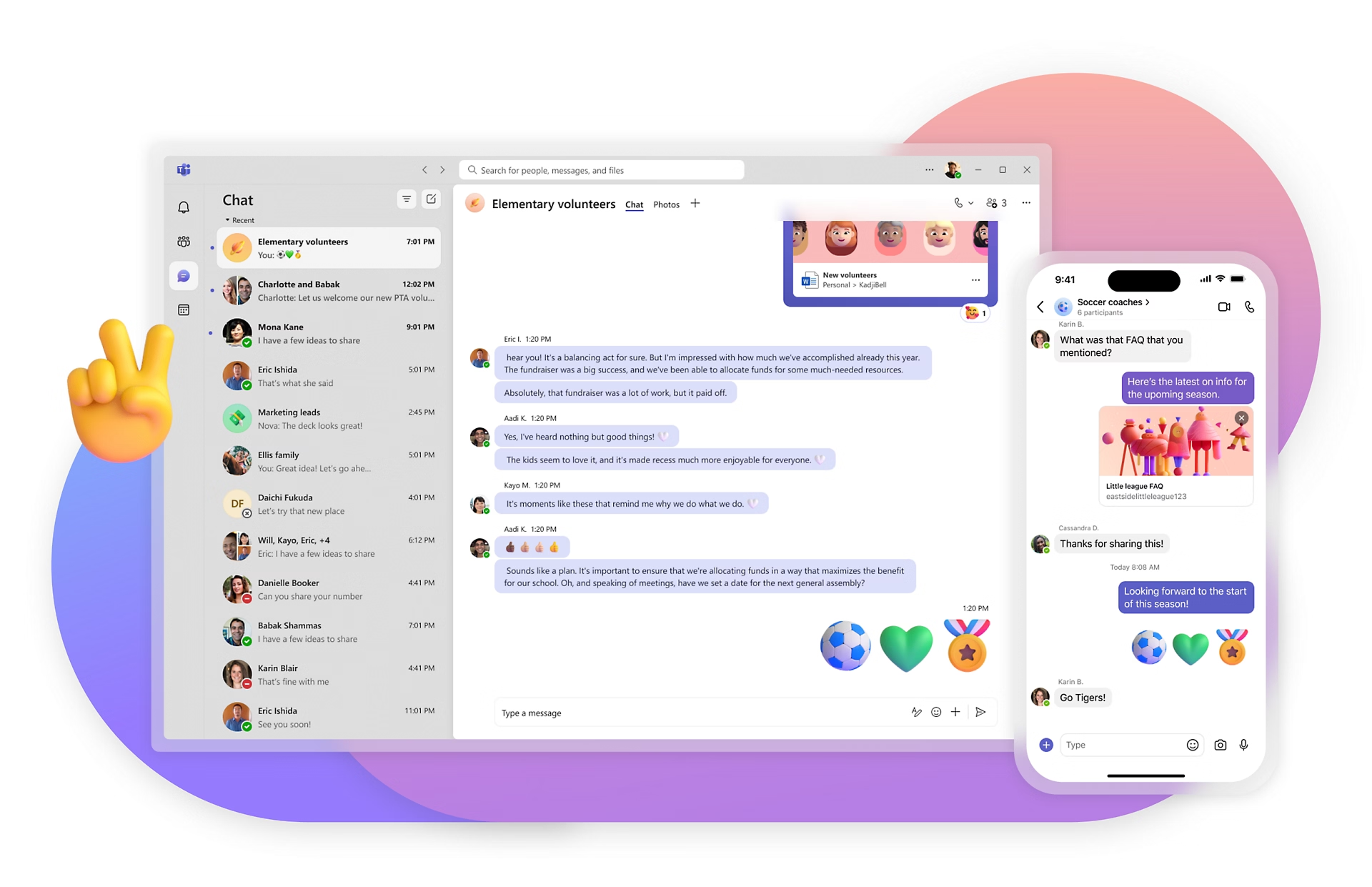
Microsoft provides a free version of its Teams platform, integrating chat, video meetings, file storage, and collaboration, tightly linked to the Office ecosystem (via web apps).
The Microsoft Teams Free version (Classic/Home, as of May 1, 2025) typically allows up to 100 participants in meetings lasting up to 60 minutes for groups (30 hours for 1:1 calls). It offers 5 GB of cloud storage per user/team. Features include unlimited chat messages and search, integrated audio/video calls, screen sharing, custom backgrounds, file sharing, web versions of core Office apps (Word, Excel, PowerPoint, OneNote), basic tasks, and polls. Limitations include the meeting duration cap, lower storage than paid plans, no meeting recordings, potentially no scheduled meetings (depending on version), limited admin/security features, and fewer integrations.
Verdict: Free Teams offers a solid mix of chat and video meetings with decent storage, and its 60-minute meeting limit surpasses Zoom’s free tier. It’s a good choice, particularly for Microsoft environment users, but doesn’t offer the project management depth of tools like Morningmate or Asana.
8. Asana
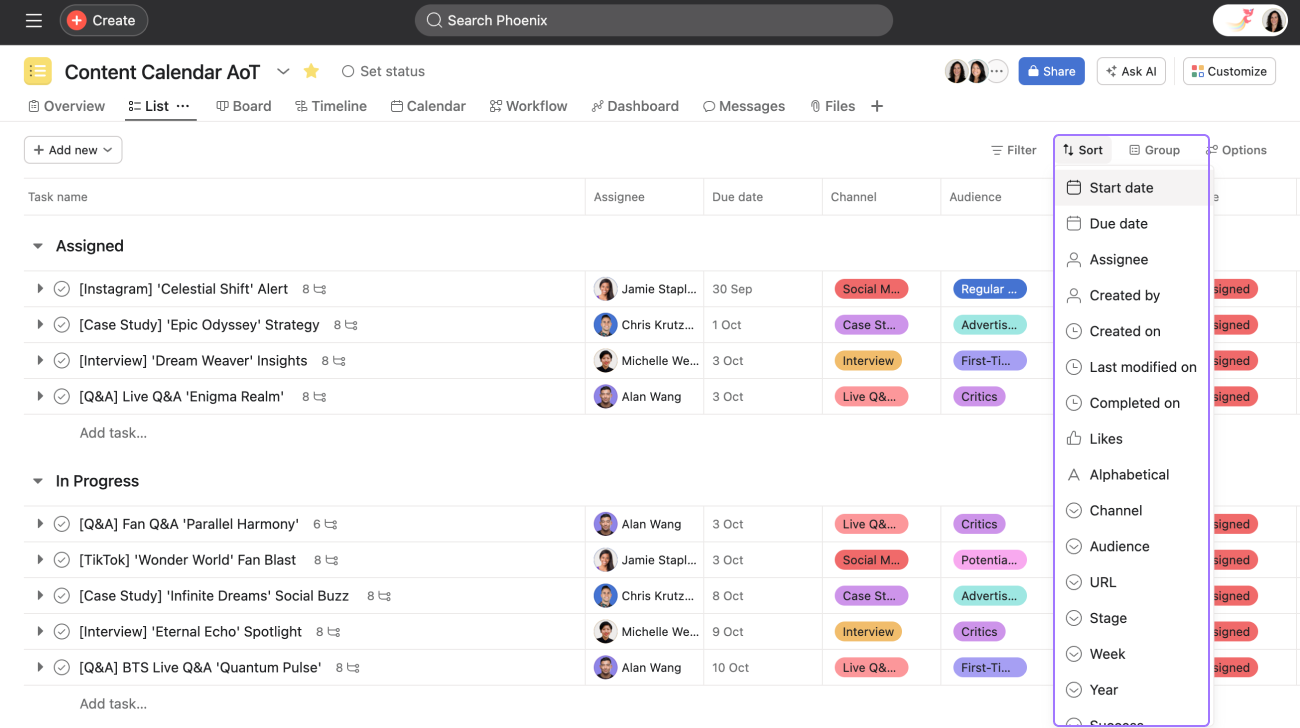
Asana is a powerful project and task management tool focused on organizing, tracking, and managing team work, known for its clean interface and workflow capabilities.
The Asana Personal (Free) Plan (as of May 1, 2025) is limited to 10 teammates. It offers unlimited tasks, projects, messages, and activity log, plus unlimited file storage with a 100MB per file limit. Included features are List, Board, and Calendar views, basic search, status updates, assignees/due dates, over 100 free integrations, and basic time tracking via integrations. Key features missing from the free plan include Timeline and Gantt views, Portfolios, Goals, Forms, the robust Workflow Builder, advanced Rules/Automation, custom fields, task dependencies, proofing, approvals, and advanced reporting/security.
Verdict: Asana’s free plan serves small teams (up to 10) well for solid task and project management basics. The main drawbacks are the user limit and the absence of crucial views like Timeline, strong automation, and custom fields found in paid tiers or some competitors.
9. Miro
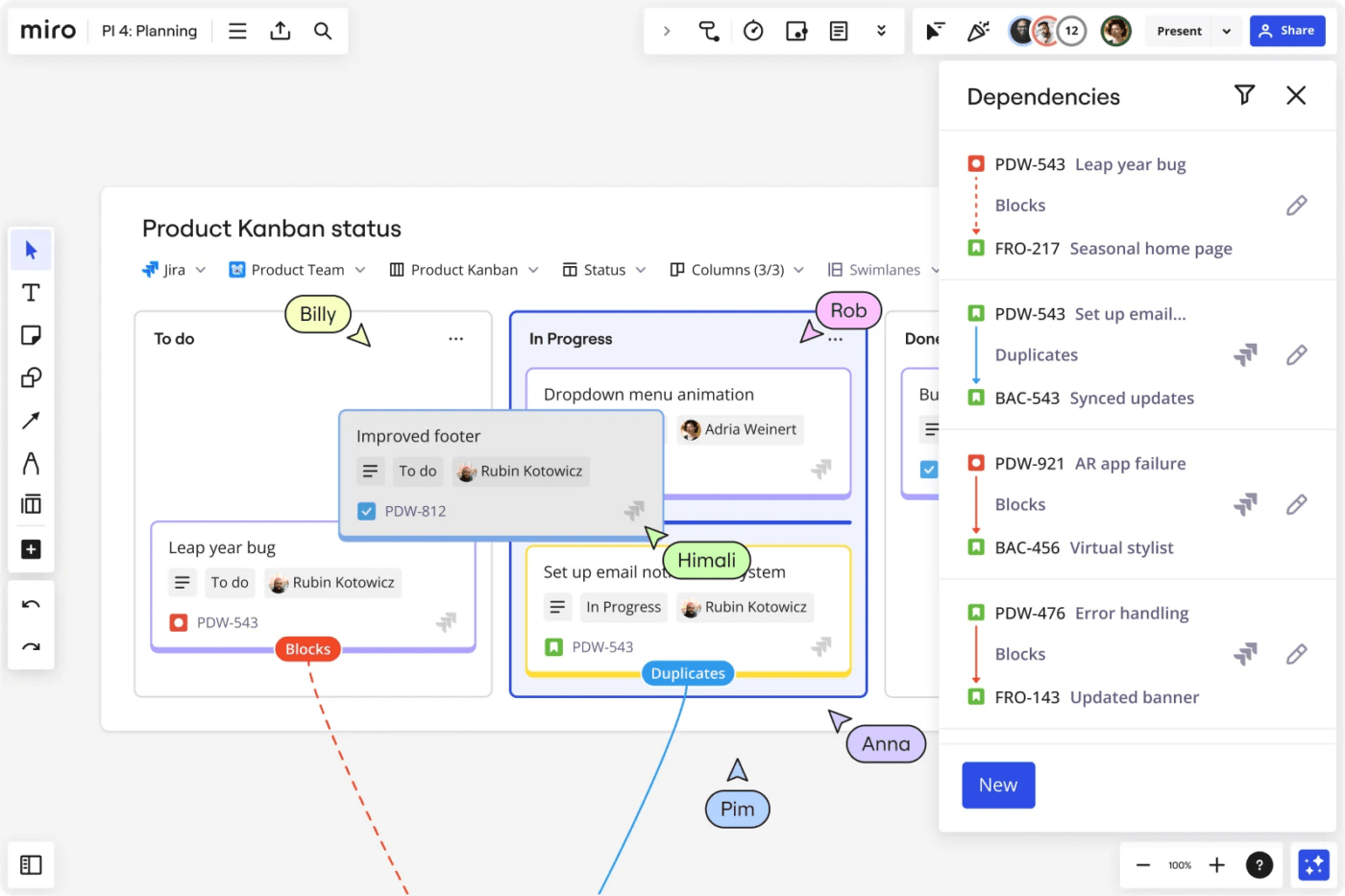
Miro leads the online collaborative whiteboard space, designed for brainstorming, mind mapping, workshops, diagramming, and visual strategy sessions. It offers an unparalleled virtual whiteboard experience.
The Miro Free Plan (as of May 1, 2025) allows unlimited team members (though editing rights might be restricted) but is significantly constrained by allowing only 3 editable boards. It includes core whiteboard tools (pen, stickies, shapes), pre-made templates, basic integrations (Slack, Teams, Drive), and basic attention management tools, plus a few AI credits (5 per team). Major limitations are the 3-board cap, lack of private boards (free boards may be team/publicly viewable), no high-res exports, no custom templates, missing advanced collaboration tools (like voting), lack of Jira/Asana integrations, no SSO, and limited permissions.
Verdict: Miro’s free plan is fantastic for occasional brainstorming or small visual tasks. The strict 3-board limit, however, prevents it from being a primary, ongoing collaboration hub for most teams. It excels as a supplementary visual tool.
10. GitHub (Free for Open Source & Individuals/Small Teams)

Primarily a platform for software development, GitHub offers project management and collaboration features valuable for technical and some non-technical teams, especially those needing version control or working on open-source projects. It’s essential for code collaboration and issue tracking.
The GitHub Free Plan (as of May 1, 2025) provides unlimited public and private repositories for unlimited collaborators, subject to repository size limits (e.g., 1GB soft limit) and LFS quotas. It includes core Git version control, issue tracking, project boards (Kanban/spreadsheet style), wikis, code review tools, basic GitHub Actions (CI/CD automation minutes – 2,000/month for private repos), basic security alerts, and package hosting. The AI coding assistant, Copilot, has a very limited free tier (2000 completions/month, 50 chat requests/month). Advanced security, required reviewers, enterprise controls, guaranteed SLAs, premium support, and higher Actions/storage limits require paid plans.
Verdict: GitHub’s free plan is incredibly powerful and indispensable for software teams. Its project features can be adapted for other remote work, but it lacks the user-friendliness and broad feature set of dedicated PM/communication tools for non-technical users.
11. Airtable
Airtable uniquely blends spreadsheet familiarity with database power, enabling teams to build flexible, custom applications and workflows for managing data, projects, and processes through a visually appealing interface.
The Airtable Free Plan (as of May 1, 2025) allows up to 5 creators/editors per base. It’s limited to 1,000 records and 1 GB of attachment storage per base. API usage is strictly capped at 1,000 calls per workspace per month, and revision history is kept for only 2 weeks. The plan includes Grid, Calendar, Kanban, Form, and Gallery views, along with basic automations and integrations. Key limitations are the record, storage, and API caps, which are restrictive for larger datasets or heavy automation. It lacks Timeline/Gantt views, advanced styling, extensions (apps), advanced permissions/security, longer history, and higher limits. Forms also carry Airtable branding.
Verdict: Airtable’s free plan works well for individuals or small teams managing small datasets or simple custom workflows. The record and API limits are the primary constraints for scaling. Its unique model offers flexibility unmatched by standard spreadsheets or project tools.
12. Figma
Figma is the web-based interface design tool standard, focusing on UI/UX design, prototyping, and design system collaboration, making it excellent for remote design teams.
The Figma Starter (Free) Plan (as of May 1, 2025) supports unlimited collaborators but limits teams to 3 Figma and 3 FigJam files per team project, although personal drafts are unlimited. It provides core vector design tools, basic prototyping, commenting, sharing, access to community resources, and basic file inspection for developers. The main limitation is the number of active team files. The free plan lacks unlimited version history, team libraries, private projects, advanced prototyping, full Dev Mode access, audio conversations, and organizational features found in paid tiers.
Verdict: Figma’s free plan is incredibly generous for individual designers or small teams working on a few active projects, offering professional-grade tools. The file limit is the main hurdle for larger teams or extensive project portfolios. Essential for remote UI/UX work.
13. Notion
Notion is a highly flexible all-in-one workspace combining notes, docs, wikis, project management, and databases, allowing users to create highly customized workflows and knowledge bases.
The Notion Free Plan (as of May 1, 2025) offers unlimited pages and blocks for individual use. However, for teams (more than one member), the workspace is severely limited to 1,000 total blocks, making collaborative use impractical beyond light testing. File uploads are capped at 5 MB per file, and version history is limited to 7 days. It allows up to 10 guests and includes core Notion blocks, basic database views (Kanban, calendar, list), and basic integrations. The block limit for teams and the small file upload size are major restrictions. It lacks unlimited team blocks, unlimited uploads, longer history, advanced permissions, private teamspaces, SSO, and advanced security.
Verdict: Notion’s free plan is fantastic for personal knowledge management, note-taking, and task tracking. The 1,000-block limit, however, makes it unsuitable for ongoing team collaboration, quickly necessitating an upgrade for shared work.
Key Features to Compare When Choosing a Tool
When evaluating these free collaboration tools for remote teams, focus on how well their free offerings meet your core needs across these key areas:
Communication & Messaging
Effective communication is essential for remote teams, requiring tools for real-time and asynchronous interaction. For real-time chat, Slack and Microsoft Teams (Free) are strong options, while Morningmate integrates messaging with project feeds. Video conferencing is led by Zoom, but it has a 40-minute free limit; Microsoft Teams (Free) and Google Meet offer 60 minutes. For asynchronous communication, tools like Morningmate, Asana, ClickUp, and Trello enable discussions through task comments, with Notion focusing on document conversations. Contextual communication is vital, and Morningmate excels in linking discussions to projects. Lastly, consider history limitations: Slack’s free plan restricts access to 90 days, while Morningmate and Asana offer more extensive history options.
Project & Task Management
To keep remote projects organized, dedicated project management tools like Morningmate, ClickUp, Asana, Trello, Notion, Airtable, and GitHub Issues excel at task creation and assignment. However, their project views differ significantly in free plans. Trello focuses on Kanban, while Asana offers List, Board, and Calendar views. Advanced features like Gantt charts are typically paid. Kanban boards are effective for workflow visualization in free plans, but true task dependencies and detailed reporting often require upgrades. Basic analytics may be available, but custom reports usually necessitate a paid plan.
File Sharing & Collaboration
Remote teams frequently share files, making storage limits and collaborative editing important. Storage varies: ClickUp (100MB total) and Notion (5MB/file) are restrictive, while Trello (10MB/file) and Asana (100MB/file) offer more. Microsoft Teams (5GB/user) and Google Drive (15GB shared) provide better options. Most platforms have basic file versioning, but durations differ (Notion 7 days, Airtable 2 weeks). Google Workspace is ideal for real-time editing, with Microsoft Teams integrating Office apps. Figma excels in collaborative design, while Miro has limitations on free boards, similar to ClickUp and FigJam.
Integration & Automation
Connecting tools and automating tasks can save time for remote teams. Check the native integrations on free plans: Morningmate connects with key apps, Slack has 10 integrations, Asana offers over 100, and Trello allows unlimited Power-Ups. ClickUp has limited integrations. Free tiers may restrict APIs for custom connections, with Airtable enforcing a 1000 calls/month limit. Basic automation features are often capped, with Trello allowing 250 runs/month and ClickUp 100 actions/month. While Zapier/Make integration can help, ensure the necessary triggers/actions are available on free plans. Choose the right free collaboration software by prioritizing features based on your team’s needs.
How to Seamlessly Integrate Remote Collaboration Tools
Using multiple free collaboration tools is often essential for remote teams to meet their needs without incurring costs. However, managing various platforms can lead to confusion and inefficiency if not done correctly. Here are some strategies for better integration of these tools:
- Define Primary Use Cases: Identify which tool will serve as the main platform for specific tasks. For example, use Morningmate for project management, Slack for quick chats, Zoom or Meet for video calls, Google Drive for file storage, and Trello or Asana for visual workflows. Avoid overlapping functions and clarify when to use each tool.
- Establish Clear Guidelines & Training: Document expectations for tool usage, such as task assignments and document storage. Conduct training sessions to ensure everyone understands the workflow and limitations.
- Leverage Native Integrations: Utilize built-in connections offered by free plans, like linking Google Drive within Morningmate or embedding Zoom links in tasks. This reduces the need to switch platforms.
- Utilize Browser Extensions & Cross-Platform Linking: Encourage the use of browser extensions for quick task capturing and link relevant tasks across platforms to create pathways between information silos.
- Consider Third-Party Connectors (Carefully): Tools like Zapier offer free tiers for limited automation. Assess whether these truly save time or complicate processes.
- Centralize Notifications (If Possible): Manage notification settings to avoid overwhelming users and encourage disabling non-essential alerts.
- Regularly Review & Refine: Periodically evaluate the effectiveness of the tool stack and be ready to adjust workflows or consider paid options if challenges arise.
Effective integration of free tools depends on clear processes and disciplined usage rather than perfect technical connections. An all-in-one solution like Morningmate can simplify this by reducing the number of tools needed.
Conclusion: Why Morningmate Is the Best Choice for Remote Teams
The shift to remote work requires effective digital collaboration, and many free collaboration tools are available, such as Slack, Trello, and Figma. However, relying solely on free plans can lead to limitations in storage, features, and productivity due to the need to juggle multiple platforms.
Morningmate stands out among free online collaboration tools in 2025, offering a cohesive environment that combines project tracking, task management, and integrated messaging. Its free plan supports up to five projects and includes essential integrations for cloud storage, providing 500MB of storage per user.
By unifying communication and project management, Morningmate’s free tier reduces the need for multiple limited tools, making it an excellent choice for individuals and small teams. As teams expand, Morningmate also offers a clear upgrade path with additional features and storage options.




